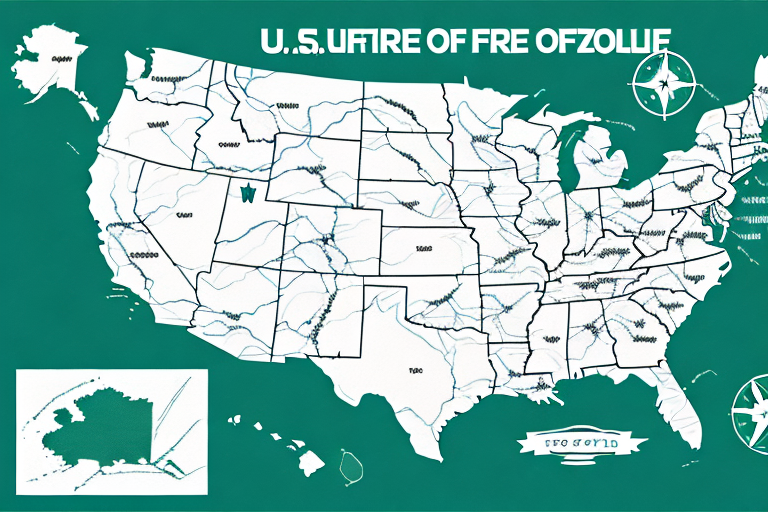Understanding UPS International Shipping Rates: A Comprehensive Guide
If you are in the business of shipping goods internationally, then UPS International Shipping is a reliable and trusted option for you. Understanding how UPS International Shipping Rates are calculated can help you make the best decisions for your budget and delivery timeline. In this article, we provide all the essential information you need to know about UPS International Shipping Rates.
The Basics of UPS International Shipping Rates
UPS International Shipping Rates are determined by several factors, including package size, weight, destination, and the level of service you choose. Prices vary for different countries and locations within those countries. UPS employs two types of rates for international shipping: published rates (standard rates available to all customers) and negotiated rates (special rates offered to select customers based on their shipping volume and frequency).
In addition to basic shipping costs, UPS offers several additional services for international shipments, such as customs clearance and insurance. Customs clearance is mandatory for all international shipments and involves processing paperwork and paying duties and taxes. UPS provides various options for customs clearance, including self-clearance or utilizing a broker. Furthermore, UPS offers insurance options to protect your shipment against loss or damage during transit. It's crucial to consider these additional services when calculating the total cost of your international shipment.
How to Calculate UPS International Shipping Rates
The most straightforward way to calculate UPS International Shipping Rates is by using the UPS Shipping Calculator or the UPS Rate and Service Guide, both available on their official website. These tools provide pricing information based on the origin, destination, package weight, and selected level of service. For tailored shipping needs, you can also contact UPS directly for a customized shipping quote.
It's important to note that UPS International Shipping Rates can vary depending on the type of item being shipped. Certain items may incur additional fees or restrictions, such as hazardous materials or oversized packages. Always check with UPS or consult their website for specific information on shipping requirements and restrictions.
Factors That Affect UPS International Shipping Rates
- Package Dimensions and Weight: Larger and heavier packages cost more to ship.
- Delivery Destination: Shipping to remote or less accessible areas may incur higher rates.
- Level of Service: Faster delivery options typically come at a higher cost.
- Package Insurance Coverage: Higher insurance coverage increases the shipping cost.
- Special Handling Requirements: Items requiring special handling may face additional charges.
- Customs Clearance Costs: Duties and taxes imposed by the destination country affect overall rates.
The type of goods being shipped is another critical factor. For example, hazardous materials or perishable goods may require special handling or packaging, increasing shipping costs. Additionally, some countries have restrictions on certain types of goods, impacting shipping rates.
Seasonal demand also plays a role. During peak shipping seasons, such as the holiday period, rates may rise due to increased demand for shipping services. Planning ahead and accounting for potential rate increases during these times can help manage shipping costs effectively.
Common Mistakes to Avoid When Calculating UPS International Shipping Rates
- Incorrect Package Weight or Dimensions: Ensure accurate measurements to avoid unexpected costs.
- Inaccurate Delivery Address: Verify recipient information to prevent delivery delays.
- Neglecting Customs Clearance Costs: Include duties and taxes in your cost calculations.
- Selecting the Wrong Level of Service: Choose a service level that matches your delivery timeline and budget.
- Poor Packaging: Improper packaging can lead to damaged goods and additional fees.
- Ignoring Destination Country Regulations: Research and comply with all shipping regulations of the destination country.
Proper packaging is essential to avoid damage during transit, which can result in additional fees and delays. Use appropriate packaging materials and adhere to UPS guidelines for packing your items.
Additionally, be aware of the shipping restrictions or regulations of the destination country. Some items may be prohibited or require special permits for international shipping. Failure to comply can lead to extra fees, delays, or legal issues. Always research and adhere to the regulations of the destination country before shipping your items.
Different Types of UPS International Shipping Options Available
UPS offers a variety of international shipping options to accommodate different shipment needs. These include:
- UPS Worldwide Express: The fastest international shipping option, guaranteeing delivery within 1-3 business days to most major destinations worldwide. Ideal for urgent shipments requiring swift delivery.
- UPS Worldwide Saver: Guarantees delivery within 1-3 business days to major destinations but is more cost-effective than UPS Worldwide Express. Suitable for shipments needing fast but not the fastest delivery.
- UPS Worldwide Expedited: Offers a balance between speed and cost, typically delivering within 2-5 business days.
- UPS Standard: A more economical option for shipments to locations in North America and Europe, with delivery times varying based on the destination.
How to Choose the Right UPS International Shipping Option for Your Needs
Selecting the appropriate UPS International Shipping option involves considering several factors:
- Package Size and Weight: Larger or heavier packages may be more cost-effective with certain shipping options.
- Destination: Ensure the selected service covers your delivery location.
- Delivery Timeline: Choose a service level that aligns with your required delivery date.
- Budget: Balance the cost against the speed and reliability of the service.
- Tracking and Reliability: Opt for services that offer robust tracking systems to monitor your shipment from origin to destination.
Understanding the customs regulations and requirements of the destination country is also crucial. Researching and comprehending these regulations can affect both the delivery timeline and the cost of your shipment. UPS provides resources and guidance on customs regulations, including online tools and customer support, to help ensure a smooth and timely delivery of your package.
Understanding the Customs Process in UPS International Shipping
The customs process is a vital component of UPS International Shipping, involving the inspection and clearance of goods by the destination country's customs authority. UPS offers customs brokerage services to assist you in navigating this process, ensuring that your package complies with all necessary requirements and documentation, such as commercial invoices, customs declarations, and relevant permits or licenses.
Customs procedures can vary significantly depending on the destination country and the type of goods being shipped. Some countries have stricter regulations and may require additional documentation or inspections. Researching the customs requirements of the destination country before shipping is recommended to avoid delays or clearance issues. Additionally, UPS provides services like duty and tax calculation and payment, as well as assistance with customs appeals and disputes.
Tips for Packing Your Items for Safe and Cost-Effective UPS International Shipping
- Use Sturdy Packaging: Select appropriate packaging materials to protect your items during transit.
- Proper Cushioning: Ensure fragile items are well cushioned to prevent damage.
- Avoid Overpacking: Excessive packing can increase package weight and size, leading to higher shipping costs.
- Consider Destination Climate: Use packaging materials that can withstand the climate and weather conditions of the destination country.
- Accurate Labeling: Clearly label your package with the recipient's name, address, and phone number to ensure proper delivery.
- Purchase Insurance: For valuable or fragile items, consider purchasing insurance to protect against loss or damage.
Proper packaging not only safeguards your items but also helps avoid additional fees related to damaged goods. Utilize sturdy boxes, appropriate cushioning materials, and secure packaging tape to enhance the protection of your shipment.
Comparing UPS International Shipping Rates with Other Carriers
Comparing UPS International Shipping Rates with those of other carriers like FedEx or DHL can help you find the most cost-effective option for your shipping needs. While UPS may offer competitive pricing, other carriers might provide discounted rates based on shipment volume or frequency. It's advisable to explore all available options before making a final decision.
Consider factors such as transit times and delivery options offered by each carrier. Some carriers may provide faster delivery times or more flexible delivery options, which could be crucial depending on the nature of your shipment. Additionally, evaluate the level of customer service provided by each carrier, as this can impact the overall shipping experience and help resolve any potential issues that may arise.
How to Save Money on UPS International Shipping Rates
- Negotiate Better Rates: Engage with UPS to negotiate more favorable shipping rates based on your shipping volume.
- Choose Slower Delivery Options: Opting for less expedited services can reduce shipping costs.
- Consolidate Orders: Combine multiple shipments to take advantage of volume discounts.
- Use Third-Party Logistics Providers: These providers can offer competitive rates and additional shipping options.
- Utilize Shipping Calculators: Compare rates from different carriers to find the most cost-effective option.
- Employ Flat-Rate Shipping Boxes: For smaller items, flat-rate boxes or envelopes can lead to significant savings.
Additionally, ensuring your items are properly packaged can help avoid damage during transit, which in turn prevents additional fees or charges for damaged goods. Use sturdy boxes, proper cushioning materials, and secure packaging tape to protect your items effectively.
In conclusion, UPS International Shipping rates can be complex and overwhelming. However, with the right information and tools, you can make informed decisions to maximize your budget and ensure timely delivery of your goods. Utilize the information provided in this guide to navigate UPS International Shipping Rates effectively and choose the option that best fits your needs and business requirements.
For the latest and most accurate information, always refer to the UPS official website or contact their customer support directly.






















